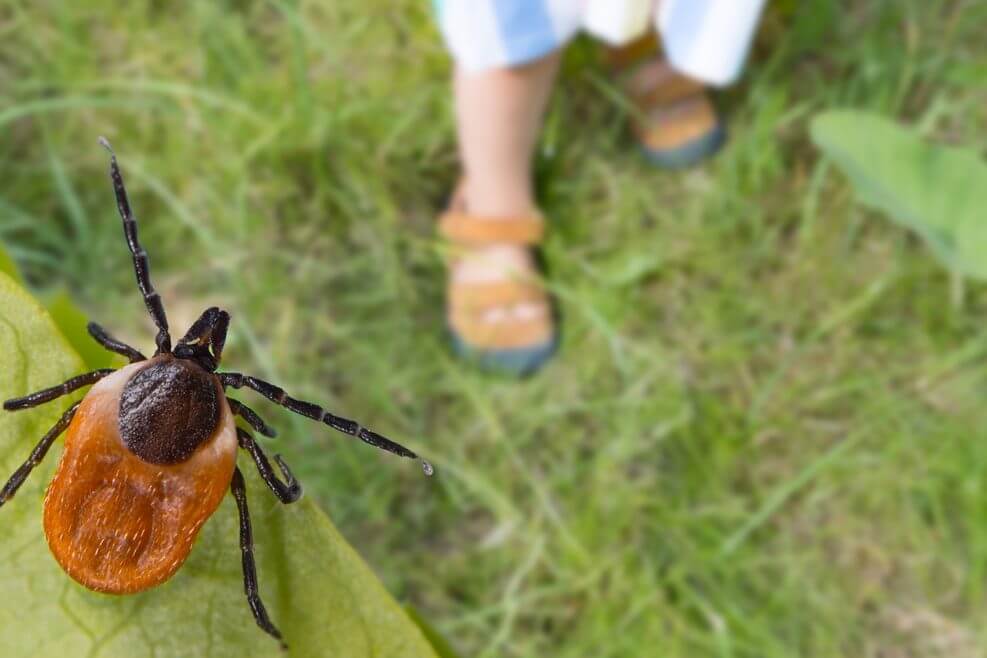Updates | Lyme Disease

Lyme Disease, Tick-Borne Diseases and Vision: What You Need to Know

New Research: Biomarker of Lyme Disease Found in the Eye
Lyme disease and tick-borne disease is a silent worldwide epidemic that shows no discrimination against children or adults. It is difficult to diagnose and can affect various parts of the body, including the eyes and the visual processing system. Visual processing refers to the way the brain processes visual information received from the eyes. The process includes the ability to track, focus, and interpret what we see. Visual processing plays a crucial role in our daily lives, such as reading, writing, learning, and playing sports.
What You Need to Know About Lyme Disease, Tick-Borne Disease and Visual Processing. Symptoms, Diagnosis and Treatment.
Symptoms:
- Visual fatigue
- Headache associated with visual activities
- Joint and muscle pain
- Skin rash
- Eye pain or sensitivity to light
- Blurred or double vision
- Red or swollen eyes
- Eye floaters or spots
- Loss of visual acuity
- Visual processing of problems
- Difficulty with balance and spatial orientation
- Memory, comprehension or feeling of being over-whelmed
- For children: Tick-borne disease will interrupt the critical cycles of development causing not only visual symptoms but also the possibility of developmental delays and interference in learning.
What is Lyme Disease?

Lyme disease is produced by Borrelia burgdorferi. Other tick-borne diseases are Bartonella, Babesia, Erlichia, Anaplasma phagocytophilum, Babesia microti, Powassan virus, Borrelia miyamotoi and the Ehrlichia muris-like organism. These co-infections are difficult to diagnose and frequently go untreated, contributing to an increase in morbidity and mortality from tick-borne disease.
Infection can cause a wide range of symptoms and characteristics ranging from flu-like symptoms, fatigue, severe headaches, rash, pain, gastrointestinal problems, cardio-vascular problems, and changes in personality as well as psychiatric complications.
Testimonial — Marisol Thomas and Padula Institute of Vision Rehabilitation
Marisol Thomas, Co-founder and President of Sidewalk Angels Foundation, a non-profit animal advocacy/animal rescue organization, and wife of Rob Thomas, solo artist and front man and primary composer for Matchbox Twenty, has battled Lyme Disease since 2003.
There are two streams of visual processing that occur in the brain:

The “what” stream and the “where” stream. The “what” stream is responsible for identifying and recognizing objects, colors, and shapes, while the “where” stream is responsible for processing the location, distance, and movement of these objects in space.
These two streams work together to allow us to navigate our environment and interact with the world around us.
Our recent research has found that tick-borne diseases can affect the amplitude of the N-75 brain wave, which can disrupt the balance between the two visual processing streams in the brain.
The imbalance causes compromise of the spatial visual process affecting balance, spatial orientation, posture, movement, and the ability to adapt to environmental changes.
Diagnosis
It is challenging to diagnose the many forms of tick-borne disease because:
- Tick-borne disease is “The Great Mimicker,” meaning the spirochete causing the infection can cloak itself and become invisible to the body’s surveillance for foreign organisms. Symptoms often appearing similar to other systemic and neurological conditions causing diagnosis to be missed or delayed.
- In order to be diagnosed the body must produce antibodies against the intruding organism producing antigens. The spirochete can change its protein outer coat like someone changing a winter coat causing it difficult for the bodies to detect.
- The spirochete can avoid the immune system attack by producing bio-films around the organism that protects the organism from the body’s defenses.
- Many persons bitten by a tick and infected don’t produce the signature ‘bull’s eye’ rash. When the symptoms appear, such as, fever, chills, headaches, joint pain, etc., it mimics the flu or a virus.
So, what does this all mean:
- Lack of diagnosis and treatment in the acute phase may result in a chronic and even neurological advancement in the undiagnosed disease.
- The literature is sparse concerning the consequences and effect of TI to vision, retinal changes, and the vascular network within the eyes.
Treatment at the Padula Institute of Vision
The research also shows that when the visual process is compromised by tick-borne disease the person will develop compensatory habits in order to attempt to function with their compromised vision. What to look for in compromised vision treatment:
- General medical treatment for the Lyme or tick-borne disease does not always resolve the visual problems and that without treatment with lenses, prisms and in some cases Neuro-Visual Postural Therapy ™ (NVPT) the visual process will remain compromised even following completion of the medical treatment.
What are the PIV methods of testing and treating visual difficulties?
When a patient is evaluated at PIV there will be visual tests that measure the brain’s response prior to treatment and after treatment.
- The testing performed at PIV uses instruments to measure and collect data from the patient to demonstrate the time that it takes for a visual stimulus to travel from the eye to the brain (occipital cortex).
- This assessment of brain waves from the visual process is called visual evoked potential. It can give the doctor an idea of whether the nerve pathways are abnormal in any way.
- If an abnormality is indicated as a result of these tests, PIV will treat the visual difficulty with prisms and lenses.
Possibilities to Affect the Vision Problems
The Padula Institute of Vision Rehabilitation provides a patient-centered approach to evaluate each person’s individual imbalance in visual processing and will provide an individual direction for rehabilitation based on each person’s needs and abilities.

